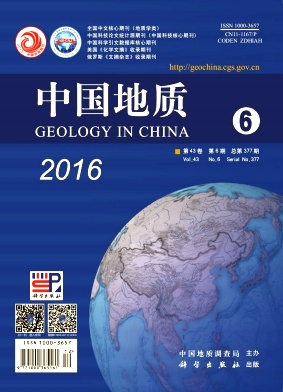WEI Shao-gang, SONG Yang, TANG Ju-xing, GAO Ke, FENG Jun, LI Yan-bo, HOU Lin. Geochronology, geochemistry and petrogenesis of quartz diorite porphyrite from the Sena copper (gold) deposit, Tibet[J]. Geology in China, 2016, (6): 1894-1912. doi: 10.12029/gc20160604
| Citation: |
WEI Shao-gang, SONG Yang, TANG Ju-xing, GAO Ke, FENG Jun, LI Yan-bo, HOU Lin. Geochronology, geochemistry and petrogenesis of quartz diorite porphyrite from the Sena copper (gold) deposit, Tibet[J]. Geology in China, 2016, (6): 1894-1912. doi: 10.12029/gc20160604
|
Geochronology, geochemistry and petrogenesis of quartz diorite porphyrite from the Sena copper (gold) deposit, Tibet
-
1.
School of Earth Sciences and Resources, China University of Geosciences, Beijing 10083, China
-
2.
Institute of Mineral Resources, Chinese Academy of Geological Sciences, Beijing 100037, China
-
3.
Chengdu University of Technology, Chengdu 610059, Sichuan, China
-
4.
Tibet Jinlong Mining Co., Ltd., Lhasa 850000, Tibet, China
-
5.
No. 5 Geological Party, Tibet Bureau of Geology and Mineral Exploration and Development, Golmud, 816000, Qinghai, China
-
Abstract
Located in the northeast of the Duolong ore concentration area in the Bangong Co-Nujiang metallogenic belt, Tibet, the Sena copper (gold) deposit has favorable prospecting potentiality. The quartz diorite porphyrite in the deposit whose zircon U-Pb age is (118.1±1.4) Ma is consistent with the age of reported arc-type ore-bearing porphyry in the Duolong ore concentration area. They belong to high-K calc-alkaline to calc-alkaline and metaluminous I-type felsic rocks. These porphyries are systematically enriched in large-ion lithophile elements (LILE such as Th, U, K, Pb and Rb) and LREE, relatively depleted in high strength elements (HFSE such as Ta, Nb, Ti and Zr) and HREE. And they are slightly rightly-oblique, show the fractionation between LREE and HREE, and display no Eu anomalies (δEu=0.92-1.04). According to the regional tectonic setting, the authors hold that the geochemical characteristics of the quartz diorite porphyrite are consistent with those of arc-type magmas in the world, and the closure time of this ocean should be later than early Cretaceous (118Ma). The Rb/Sr ratios (0.143-0.195), Zr/Hf ratios (31.23-34.14), and Nb/Ta ratios (9.21-11.59) suggest that the melts had characteristics of crust mantle mixing. The zircon (176Hf/177Hf)i, εHf(t) and TDM2 are 0.282707-0.282719, 0.28-11.77 and 424-1159 Ma, respectively, indicating that the rocks probably represent the remelting products of juvenile crust, also impacted by minor mantle-derived mafic melts under the background of northward subduction of Bangong Co-Nujiang Tethys to Qiangtang massif.
-

-
-
Access History







 DownLoad:
DownLoad: